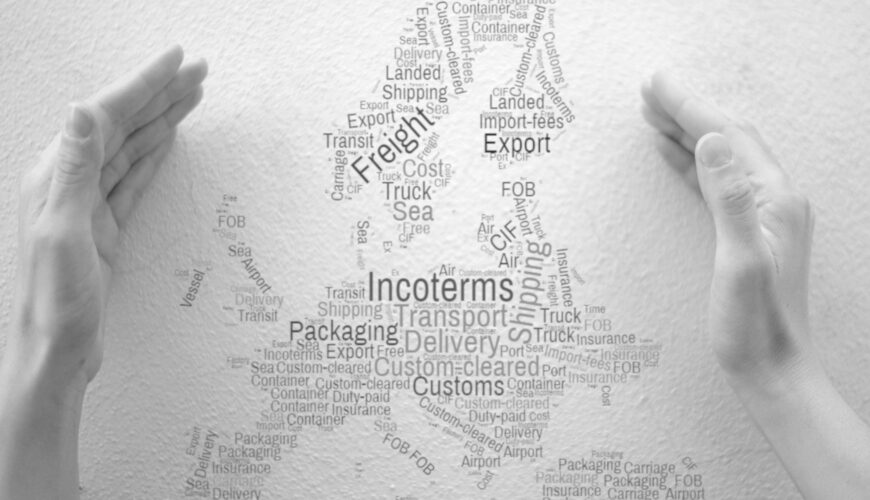Optimizing international logistics with Incoterms is essential for ensuring clarity and efficiency in global trade. Incoterms (International Commercial Terms) are a set of 11 standardized rules that define the responsibilities and risks for both buyers and sellers throughout the transaction process. By serving as a universal language in contracts, Incoterms eliminate confusion regarding freight arrangements, insurance costs, customs clearance, and the point at which the risk of loss or damage transfers.
For supply chain professionals, Incoterms are more than legal jargon – they are strategic tools to optimize service levels and costs. The right choice of Incoterm can streamline logistics, improve lead time reliability, reduce total landed costs, and give greater visibility and control over shipments. This comprehensive guide explains each Incoterm 2020 rule in detail, highlights the latest updates from Incoterms 2020, and provides insights on how to leverage these terms to enhance your supply chain performance.
Understanding Incoterms: Structure and Purpose
Incoterms define who does what in an international shipping transaction. Each three-letter term specifies the seller’s and buyer’s obligations regarding: transportation (from factory to final destination), export/import customs clearance, insurance, and delivery point where risk transfers. The purpose is to simplify trade negotiations by providing a set of standard options, thereby reducing disputes and delays. Incoterms do not address other contract elements like payment terms or title transfer – they strictly focus on logistics responsibilities and risk.
Structure: The 11 Incoterms are categorized by mode of transport and extent of seller’s responsibility. Seven rules apply to any mode of transport (EXW, FCA, CPT, CIP, DAP, DPU, DDP) and four are specific to sea and inland waterway transport (FAS, FOB, CFR, CIF). Another way to view Incoterms is by the increasing level of obligation on the seller. At one end, E-term (EXW, Ex Works) represents minimal seller responsibility; at the other end, D-terms (DDP, Delivered Duty Paid) impose maximum obligations on the seller. In between, F-terms (FCA, FAS, FOB) have the seller deliver to a carrier or port with the buyer taking over main carriage, and C-terms (CPT, CIP, CFR, CIF) have the seller arrange and pay for main carriage (and sometimes insurance) while the buyer assumes risk from a certain point.
How Incoterms Work: By agreeing on an Incoterm and a named location (for example, FOB Shanghai or DAP Chicago), the buyer and seller set a clear division of costs and risks. For instance, under FOB (Free On Board), the seller must get goods loaded onto the vessel at the port of shipment, and from that point onwards the buyer takes on the cost and risk. Under DDP (Delivered Duty Paid), the seller handles everything – shipping, import clearance, and delivery to the buyer’s door, bearing all costs and risks until the goods are at the buyer’s premises. These rules allow parties to “mix and match” responsibilities based on their capabilities.
Incoterms 2020: The 11 Rules and Definitions
EXW – Ex Works
EXW means the seller makes the goods available at their premises or another named place, and the buyer assumes all costs and risks from that point onward. The seller’s only obligation is to ensure the goods are ready for pickup at the named location and provide any required documents.
FCA – Free Carrier
FCA requires the seller to deliver goods to a carrier or another party nominated by the buyer at the seller’s premises or another agreed location. The seller clears the goods for export. Risk transfers to the buyer once the goods are delivered to the carrier.
FAS – Free Alongside Ship
FAS is used for sea or inland waterway transport. The seller delivers when goods are placed alongside the vessel at the port of shipment. The buyer handles loading onto the vessel and subsequent responsibilities.
FOB – Free On Board
FOB obligates the seller to deliver goods on board the vessel nominated by the buyer at the named port of shipment. Risk and cost transfer to the buyer once the goods are on board.
CFR – Cost and Freight
CFR requires the seller to pay costs and freight to bring the goods to the port of destination. However, the risk passes to the buyer once the goods are on board the vessel.
CIF – Cost, Insurance and Freight
CIF is similar to CFR, but the seller must also obtain insurance for the buyer. The seller delivers goods on board and pays for freight and insurance to the destination port, while risk still transfers at loading.
CPT – Carriage Paid To
CPT means the seller delivers goods to a carrier and pays for transportation to the named place of destination. Risk passes to the buyer when the goods are handed to the first carrier.
CIP – Carriage and Insurance Paid To
CIP includes all obligations of CPT, with the addition that the seller must obtain comprehensive insurance for the goods in transit.
DAP – Delivered at Place
DAP obliges the seller to deliver goods to a named destination, ready for unloading. The buyer handles unloading and import clearance.
DPU – Delivered at Place Unloaded
DPU requires the seller to deliver and unload goods at the named destination. The buyer assumes responsibility after unloading, including import duties and clearance.
DDP – Delivered Duty Paid
DDP imposes maximum responsibility on the seller, who must deliver goods to the named place in the buyer’s country, including handling all import clearance, duties, and taxes.
Key Updates in Incoterms 2020
- DAT was renamed to DPU to clarify that delivery can occur at any place, not just a terminal.
- Insurance coverage under CIP was raised to Clause A (comprehensive), while CIF remains at Clause C (basic).
- FCA now allows for the buyer’s carrier to issue an on-board bill of lading to the seller.
- Transport performed by the seller or buyer’s own vehicles is now explicitly permitted in FCA, DAP, DPU, and DDP.
- All cost responsibilities are now clarified in A9/B9 sections to reduce confusion.
Leveraging Incoterms Strategically
Shipping Responsibility & Operational Control
Choose Incoterms that align with your logistics strengths. For instance, importers wanting full control might favor FCA or FOB to manage carrier selection and tracking. Exporters may offer DAP or DDP as value-added services to stand out.
Risk Transfer and Insurance
Understand where risk passes. If your company assumes risk early (e.g., under EXW or FCA), ensure appropriate insurance is in place. For transactions under CIF or CIP, evaluate the adequacy of insurance provided.
Customs Clearance and Compliance
Ensure the responsible party is capable of handling customs at both ends. Avoid terms like DDP unless you can manage destination country clearance.
Cost Control and Total Landed Cost
Compare Incoterms based on total landed cost, not just unit price. Sometimes, letting the supplier handle freight (CIF, DAP) is cost-effective; other times, taking control (FOB, FCA) can lower costs and improve reliability.
Visibility and Lead Time
For greater shipment visibility and control over lead time, buyers may prefer FCA or FOB. Sellers can offer CIF or DDP when they have superior shipping networks and wish to provide seamless service.
Conclusion
Incoterms are essential tools for defining roles and managing international logistics. When used strategically, they allow supply chain professionals to reduce costs, improve service reliability, and minimize risk. Select Incoterms that best match your operational strengths, risk tolerance, and service expectations. Proper implementation of these rules can significantly enhance global trade performance.


